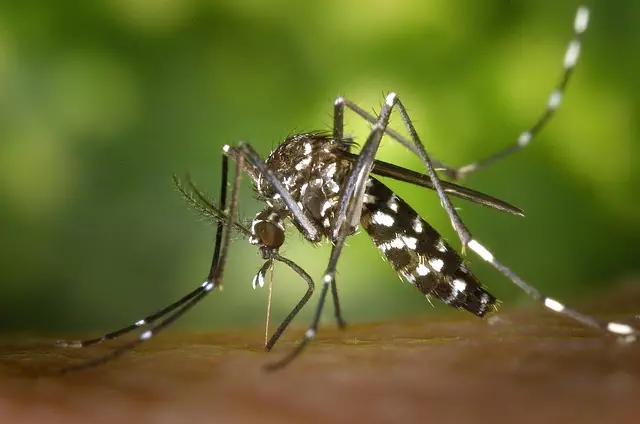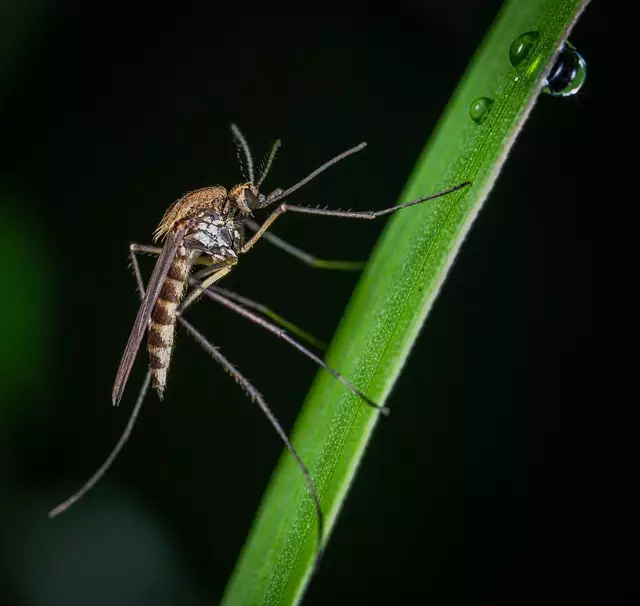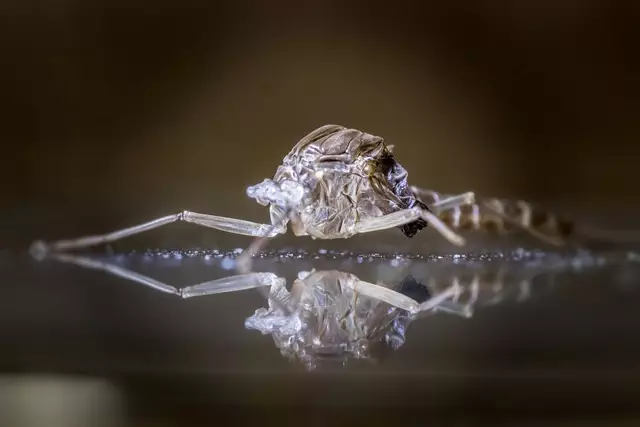Mosquito control requires a multi-faceted approach focusing on understanding their behavior and breeding cycle. Key strategies include eliminating standing water habitats, targeting each stage of their life cycle with specific controls, sealing entry points, using natural repellents, applying chemical treatments judiciously, employing mechanical control methods, maintaining well-kept yards, and adapting practices with seasonal changes. Community collaboration through education and coordinated initiatives significantly reduces mosquito-borne disease risks, enhancing outdoor comfort and safety year-round.
Tired of yard mosquitoes? This comprehensive guide explores effective mosquito control strategies, from understanding their behavior and breeding patterns to natural repellents, chemical treatments, mechanical control methods, and preventive measures. Discover seasonal strategies and community efforts aimed at minimizing mosquito populations for a more comfortable outdoor experience. Implement these proven techniques to reclaim your backyard and enjoy summer without the buzz.
Understanding Mosquitoes: Behavior and Breeding Patterns

Mosquitoes are more than just a nuisance; they are tiny pests with a complex behavior and breeding cycle. Understanding their patterns is key to effective mosquito control. These insects breed in standing water, so eliminating potential habitats is a primary strategy. Mosquitoes are most active during dawn and dusk, when they feed on both humans and animals. Their preference for certain carbon dioxide levels and body heat makes them drawn to people, making outdoor activities more enjoyable but also increasing the risk of bites.
Knowing their life cycle further aids in prevention. Mosquitoes undergo four stages: egg, larva, pupa, and adult. Each stage requires specific environmental conditions, providing opportunities for targeted control measures. For instance, treating water bodies during the larval stage can significantly reduce mosquito populations. By combining these strategies, homeowners and professionals can effectively manage mosquito presence, ensuring outdoor comfort and safety throughout the year.
Identifying Common Entry Points for Yard Mosquitoes

Mosquitoes are notorious for finding their way into yards through various entry points, making effective mosquito control a top priority for many homeowners. Common access points often include doors and windows, especially those left open or with faulty screens. Regularly inspecting these areas for any tears or gaps is essential to preventing mosquitoes from entering your outdoor space.
Additionally, plants near entryways can serve as inviting habitats for mosquitoes. Thicker foliage provides both shelter and breeding grounds, so keeping plants trimmed and maintaining a clear perimeter around doors and windows can significantly reduce mosquito presence. Identifying and sealing these entry points is a crucial step in any comprehensive mosquito control strategy.
Natural Repellents and Their Effectiveness

Mosquitoes are a common nuisance, but there are natural ways to keep them at bay without resorting to harsh chemicals. One of the most well-known and effective repellents is citronella, which can be found in many essential oils and candles. The strong scent of citronella is known to deter mosquitoes, making it a popular choice for outdoor gatherings and patio spaces. Not only does it provide a natural mosquito control method, but it also adds a pleasant aroma to your environment.
Other natural repellents include herbal extracts like lavender, peppermint, and basil. These essential oils can be applied topically or diffused in the air to create an insect-unfriendly atmosphere. Studies have shown that these natural compounds are as effective, if not more so, than many commercial mosquito repellents, offering a safe and eco-friendly alternative for mosquito control.
Chemical Treatments: Pesticides and Sprays

Chemical treatments, such as pesticides and sprays, offer a quick fix for mosquito control. These products are designed to eliminate mosquitoes on contact or by creating an invisible barrier that repels them. However, it’s crucial to remember their potential impacts on the environment and human health if not used properly. Always follow the instructions carefully and consider the active ingredients, as some may be more harmful than others.
When using chemical treatments, focus on targeted applications in areas where mosquitoes breed or rest. Regular application can significantly reduce mosquito populations over time. Yet, it’s essential to explore alternative methods or combine these solutions with natural strategies for a comprehensive Mosquito Control approach that minimizes environmental risks.
Mechanical Control Methods: Traps and Nets

Mechanical control methods offer a physical approach to mosquito management, focusing on traps and nets as primary tools. These strategies are particularly effective for specific situations and can complement chemical treatments. Mosquito traps, for instance, use carbon dioxide, heat, or light to attract and capture mosquitoes. They are highly targeted and can be placed in areas where human activity is minimal, making them ideal for reducing mosquito populations around homes or gardens without affecting beneficial insects.
Mosquito nets, on the other hand, create physical barriers against mosquitoes entering enclosed spaces like bedrooms or outdoor seating areas. This method is commonly used in regions where mosquitoes are carriers of diseases like malaria or dengue fever. By blocking their access to humans, nets significantly decrease the risk of mosquito-borne illnesses and provide a sense of protection during sleep or relaxation outdoors.
Preventive Measures: Yard Maintenance and Landscaping

Maintaining a well-kept yard is an effective strategy for mosquito control. Regular yard maintenance and landscaping practices can significantly reduce mosquito breeding grounds. Eliminate standing water, as mosquitoes require it for laying eggs. This includes emptying water from flower pots, buckets, bird baths, and any other containers that may collect water. Keep your lawn mowed short to minimize areas where mosquitoes can rest and breed. Trimming shrubs and trees helps improve air circulation, making the environment less hospitable for mosquitoes.
Additionally, proper landscaping techniques can create a natural barrier against mosquitoes. Planting certain herbs like citronella, lavender, marigolds, or lemongrass has been shown to repel mosquitoes naturally. Creating a diverse garden ecosystem with native plants can also attract beneficial insects that feed on mosquitoes. Regularly removing dead leaves and debris from your yard further prevents mosquito breeding by eliminating potential hiding spots. These preventive measures, combined with other control methods, offer a holistic approach to keeping your outdoor spaces comfortable and free from pesky mosquitoes.
Seasonal Strategies for Effective Mosquito Control

In the ever-changing seasons, adopting strategic Mosquito Control methods is essential for creating an outdoor haven free from pesky bites. During the warmer months, when mosquitoes are most active, focusing on environmental changes can significantly reduce their population. This includes eliminating standing water sources, as mosquitoes breed in stagnant water, and maintaining proper yard upkeep to minimize hiding spots. Regularly trimming vegetation and raking leaves prevent these insects from finding shelter.
As the seasons transition, a different approach is required. In colder climes, treating your yard with mosquito-repelling plants can provide natural protection. Certain herbs like citronella, lavender, and marigolds are known to deter mosquitoes naturally. Additionally, seasonal applications of insect growth regulators (IGRs) can disrupt their life cycle, offering longer-lasting relief from these biting insects.
Community and Public Health Efforts in Mosquito Management

In many communities, mosquito control is a collaborative effort involving local governments, health departments, and residents working together to manage and reduce mosquito populations. These coordinated efforts aim to create an environment that discourages mosquitoes from breeding and thriving. Public health initiatives often include educating citizens on eliminating standing water—a primary breeding ground for mosquitoes—through proper waste disposal, draining of containers, and maintaining clean yards. Community-wide participation in these programs is vital to achieving significant mosquito control.
Additionally, local authorities may employ various Mosquito Control methods such as insecticide spraying, larvicide treatments in water sources, and the introduction of natural predators like fish or bacteria that target mosquito larvae. These strategies, when combined with public awareness and action, can significantly reduce the impact of mosquitoes on community health and well-being, minimizing the risk of diseases transmitted by these insects.
